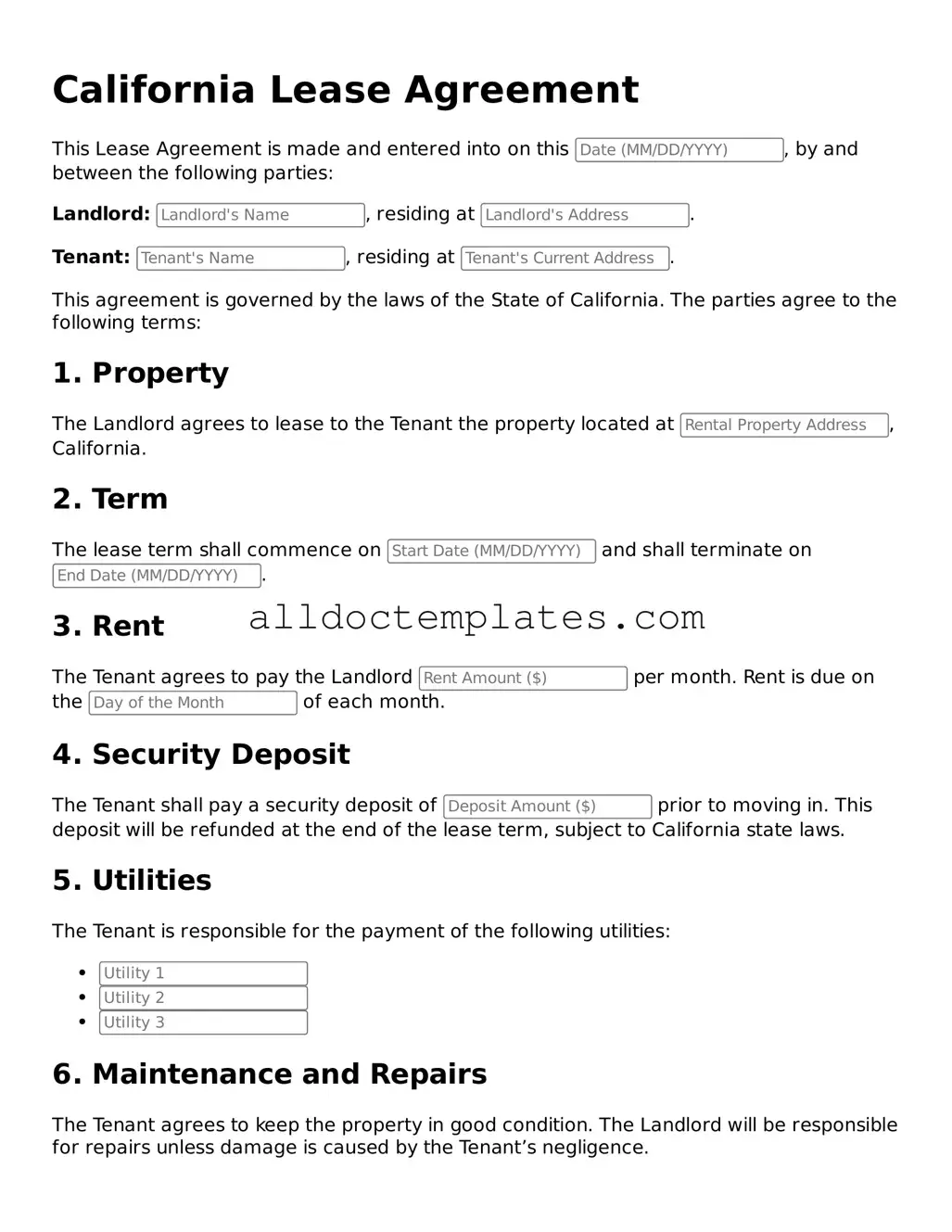Free Lease Agreement Document for California State
The California Lease Agreement form is a legal document used to outline the terms and conditions between a landlord and tenant for renting residential property in California. This form provides essential details such as rent amount, lease duration, and responsibilities of both parties. Understanding this agreement is crucial for ensuring a smooth rental experience.
Get Your Form Now
